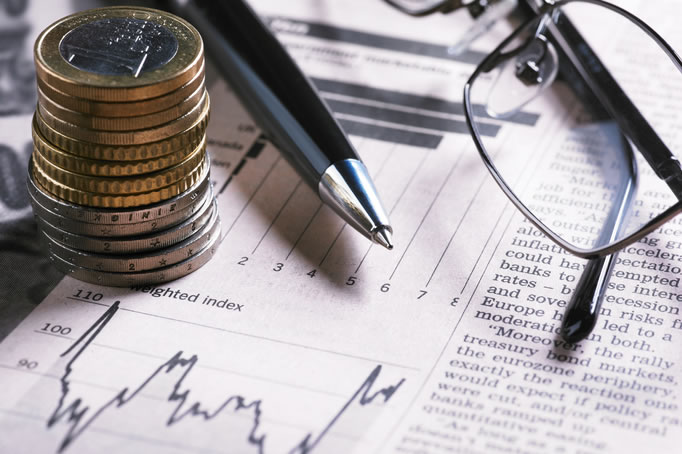
With Brexit now looking almost certain to go ahead on 31st January 2020, many people are wondering what the impact might be on their investments. For those concerned about possible volatility or decline, it can be tempting to consider other, less “risky” asset classes in a preemptive attempt to try and shield your portfolio.
Whilst we would caution against making rash, ill-informed decisions about re-constituting your portfolio, it can certainly help to be aware of how fixed-security asset classes work, and how they might be appropriate following discussion with your financial planner. In this short guide, we will be sharing a brief outline on one of these types of securities (i.e. bonds), and how they might be important in 2020.
An overview of bonds
Bonds are actually quite a simple concept. It’s a similar dynamic to when you go to your local bank branch and ask them for a loan. If they agree to give it to you (say, £10,000), then you will be obliged to pay this amount back over an agreed period, with interest.
With bonds, however, you (i.e. the investor) are the loan provider and it might be a company, or government, which agrees to borrow money from you. Specific names are often given to different types of bonds. For instance, UK government bonds are often called “gilts”, whilst “corporate bonds” refer to bonds issued by companies to raise capital.
Bonds in 2010, and looking ahead to 2020
Many market commentators have noted that the 2010s saw a lot of interesting behaviour in the bond markets. In 2016 following the Brexit vote, in particular, investors witnessed government bonds across the world (possibly as much as 30% of the total bond market) produce negative yields. A similar thing happened in 2019 during the summer, where $17trn-worth of government and corporate debt produced negative returns. Historically speaking, this is quite unusual and it happens when an investor (e.g. you) buys a bond for more than its face value. If the interest due over the lifetime of the bond amounts to less than what you originally paid for it, then it produces a negative yield, effectively translating into lost money.
Looking ahead to the 2020s, however, many market commentators are speculating that this era of ultra-low yields may be coming to an end. Sweden has recently abandoned negative interest rates, for instance, recognising that they cause issues for the wider economy. The final quarter of 2019 saw steady growth in bond yields. However, it’s important for financial planners to advise clients that speculation is always dangerous. Nobody knows what will happen in the UK and the global economy in 2020. Much hinges on the precise form Brexit takes, and whether the EU and UK are able to negotiate a satisfactory trade deal and avoid a “no-deal” scenario.
Why include bonds in a portfolio?
Every investment portfolio will, of course, be different depending on your financial goals, interests, stage of life and risk tolerance. That said, bonds are often a feature within a portfolio recommended by a financial planner, to a greater or lesser extent.
The fact is, risk is built into the nature of money, wealth and investing. Opening yourself up to the possibility of greater financial reward usually means accepting a greater level of risk. Holding cash savings is typically seen as one of the lowest-risk options available to you, but in today’s world of low interest rates, it usually results in capital erosion over time (once inflation is taken into account).
Bonds and other fixed-interest investments are commonly seen as the next step up from cash. Investing in UK government bonds (gilts), for instance, is likely to be less risky than investing in company stocks within a fund, yet the potential returns are also likely to be lower.
Where bonds can really add value is by acting as a “buffer” within your portfolio. Bonds are often classed as “defensive” assets because they tend to experience less volatility than other assets, such as property or stocks. They are also deemed less risky because companies tend to pay out income to bonds before they pay out to shareholders. Bond payouts take particular priority over shareholders if a company goes bust.
Suppose the UK experiences an economic slowdown. Quite often, this tends to lead to lower inflation, which can make bond income more compelling. Such a slowdown also can lead to lower company profits and return on the stock market, which can push up the value of bonds even further. Moreover, if the stock market takes a dive then fixed-income securities such as bonds can provide a powerful hedge within your portfolio, shielding you until market recovery.
These can all be powerful reasons to consider including bonds within your portfolio, but it’s important to understand the downsides too. Remember, if the market believes interest rates are likely to go up then this tends to result in a reduction in the value of existing bonds (which have lower rates). On the other hand, if market expectation is for interest rates go down then any bonds you hold are likely to go up in value.
If you are interested in discussing your savings or investment strategy with one of our financial planners at FAS, then please don’t hesitate to contact us to arrange a meeting.
This content is for information purposes only and does not constitute investment advice or financial advice.








